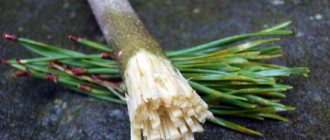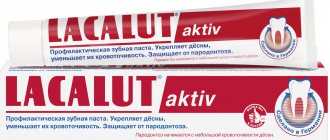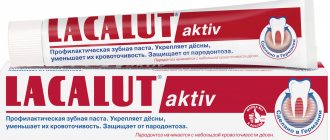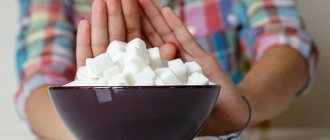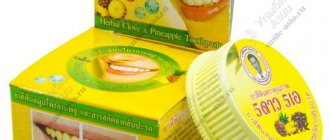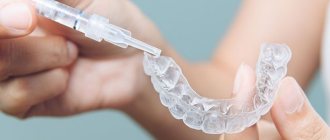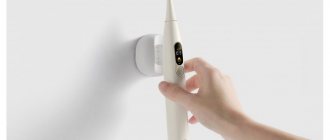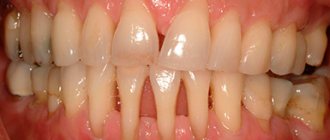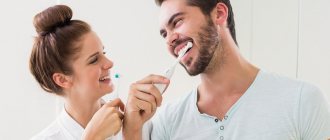Normally, a person has 32 teeth. By the age of thirteen, we acquire the entire set: 8 incisors, 4 canines, 8 premolars and 8-12 molars, but the problems are just beginning. People smoke, eat chocolate and cakes, drink soda and skip dentist appointments. But most importantly, many simply do not know how to brush their teeth properly.
Which brush is better: regular or electric? What should be in the paste? Do I need dental floss and irrigator? How to hold a toothbrush? Reminder answers your top questions about oral hygiene.
What should be in toothpaste?
The main thing is fluorides
, which reduce the risk of caries and strengthen tooth enamel. The paste may also contain active ingredients to reduce tooth sensitivity, against germs and for whitening. But it is not they that cause the most controversy, but the abrasive - particles that physically help remove plaque and stains from teeth and polish the enamel.
Abrasive particles should not be too large, hard or sharp, so as not to scratch teeth and wear out dentin and enamel. Sand, for example, or crushed cuttlefish bones, which were used in pastes before the 1900s, are poor abrasives. Therefore, now there is a standard for abrasiveness - < 250 RDA
(relative dentin abrasivity). Sometimes it is recommended to choose toothpastes with a lower RDA because they are supposedly safer and wear less on teeth. In fact, there is no evidence for this recommendation. For example, the American Dental Association (ADA), which developed the RDA scale, advises choosing any paste with an abrasiveness below 250 RDA. Actually, it’s difficult to find another one on the market now.
GLOBAL WHITE
This extra-whitening product contains active oxygen and a PP complex enriched with abrasives and charcoal, which help fight plaque every day and slow down the formation of tartar. You can get a snow-white smile and the opportunity to visit the dentist less often for just 200 rubles in one tube.
All of the pastes listed above perfectly solve the problem when you constantly care for your teeth and gums, combine them with an irrigator and mouthwash, and also don’t forget to visit the dentist for hygiene procedures. But, in the opinion of the editors, they are unlikely to be able to clean off mineralized deposits if you have waited for a long time.
Don't disappoint your expectations and be healthy! And tell us in the comments which toothpastes help you maintain health, fresh breath and clean enamel.
Notice
: Undefined variable: post_id in
/home/c/ch75405/public_html/wp-content/themes/UltraSmile/single-item.php
on line
45 Notice
: Undefined variable: full in
/home/c/ch75405/public_html/wp-content /themes/UltraSmile/single-item.php
on line
46
Rate this article:
( 3 ratings, average: 5.00 out of 5)
plaque
- Leontiev V.K. Environmental and media-social aspects of major dental diseases. Biosphere, 2009.
- The cost is as of the end of 2022.
How to choose a regular toothbrush?
Make sure the brush is soft
: This is the main thing. If you brush your teeth twice a day and do it correctly, then the soft bristles will cope with plaque; you don’t need extra hardness (it’s actually soft too). The softness also minimizes the risk of injury to teeth and gums.
The head of the toothbrush should ideally be small, only 2-2.5 cm in length
.
The neck is flexible
. But this rule is not as universal as the softness of the bristles. The main thing is that you feel comfortable holding the brush and brushing your teeth with it.
The design of the bristles can be different: with a straight cut (the most common), crossed (criss-cross system), zigzag, interspersed with plastic bristles. There is modest evidence that crossed bristles are slightly better at removing plaque. The studies did not compare plastic bristles with regular bristles. But experts worry that both they and the criss-cross system can harm gums and enamel if you apply too much pressure. Perhaps the best choice is classic straight cut bristles
.
"Radonta"
RADONTA – products. The company conducted serious research on its pastes, which proved that the products relieve people of soft gingival plaque and reduce the amount of tartar. They also cope well with the symptoms of gingivitis and periodontitis: they eliminate swelling and bleeding of the mucous membrane, eliminate unpleasant odor, relieve inflammation, as well as sensitivity of teeth and gums, improve blood flow, and enhance the function of the salivary glands. You will receive the first results within 5-8 days after starting to use the product, but you need to carry out cleansing procedures for at least 3-5 minutes both in the morning and in the evening.
To achieve the effect, the company offers to purchase a whole range of pastes: morning and evening at a price of 750 rubles. Or you can purchase them separately: morning for 360 rubles, evening for 450 rubles. The range also includes a whitening product that contains up to 150 DRA, which is rare even for the most famous formulations.
“I once read online about the German Detartrine paste that it contains zircon grains and silica and does an excellent job of removing tartar even in smokers. My husband and I both smoke. I was delighted and began to look for information. But what a disappointment I was when I found out that this is a professional product for professional hygiene and dentists. How so? I don’t understand why so many sites include it in their ratings of anti-plaque products that will help deal with the problem at home? This is misleading!”
LeraT., irecommend.ru
What to do if you don’t have a brush and toothpaste at hand?
Then use fluoride mouthwash
. It won’t replace a full cleaning, but it will give you a feeling of freshness and remove at least some of the bacteria.
In general, the rinse is a useful addition to regular teeth brushing: it reaches places that are difficult to clean with a brush and toothpaste. Cosmetic mouthwash (the regular kind found on the supermarket shelf) can temporarily remove bad breath. Therapeutic (available over the counter) can kill bacteria, relieve gum disease (gingivitis), and control plaque and tooth decay. It is better to use it, but select it together with your dentist.
Removing plaque and tartar from teeth using alternative methods
There are several alternative methods for removing plaque in dentistry, which include:
- To remove stone, you will need a special scanner that allows you to eliminate even those deposits that are hidden under the gums
The mechanical method using boron is used in dental offices. The dentist, having plucked the crystallized accumulation with a special bur, begins to scrape the surface.
- Ultrasonic method. To remove stone, you will need a special scanner that allows you to eliminate even those deposits that are hidden under the gums.
- The laser method makes it possible to remove plaque layer by layer. The stones are crushed into small particles and removed from the oral cavity with jets of air and water.
- A chemical method using a special paste, gel, which contains acid and alkali. The active components of a special chemical agent help soften (dissolve) the stone and easily remove it from the enamel surface.
How about cleaning your tongue? If yes, then with what?
Bacteria that cause tooth decay also multiply on the tongue. But there is no evidence that everyone needs to clean it. A study of 251 subjects found that brushing the tongue helps get rid of bad breath - halitosis.
. But there is no exact data on how often and for how long to clean your tongue, what technique to use.
Manufacturers offer special tongue scrapers
, which do not cause a gag reflex, and recommend brushing your tongue twice a day after brushing your teeth. You should start from the root of the tongue, where most bacteria accumulate. Using gentle pressure, you first need to move from the root of the tongue to its tip, and then treat the side surface, right and left.
Rinse aids
Another common question for dentists is rinses. The mouthwash can be used after morning and evening brushing, but should never replace it. Alternatively, you can use the mouthwash throughout the day after meals, in which case it will work great.
When choosing a rinse, you need to take into account the recommendations of your dentist - your doctor may recommend a rinse specifically for your dental situation. If you choose it yourself, then remember that solutions with chlorhexidine, triclosan or alcohol are not suitable for constant use , you need to be very careful with them. Such rinses are medicinal products and must be prescribed by a dentist.
Rinse aids
If you find it difficult to choose products for home dental care, you can ask your dentist - the doctor will be happy to select for you a suitable toothbrush, toothpaste and all the necessary additional products.
Should I floss?
The question is controversial. The brush removes only 60% of the dirt: it cannot reach the interdental spaces, and a lot of excess remains in them. Therefore, a tool for cleaning interdental spaces is definitely needed.
But does it have to be dental floss? Some experts believe the method is outdated, the evidence for its effectiveness is inconclusive, and flossing can damage gums and teeth if used incorrectly. Interdental brushes can be used instead of dental floss.
or
water irrigator
.
American dentists still recommend dental floss. You should floss once a day, before or after brushing your teeth. Keep in mind that if you're just starting to floss, it may be uncomfortable in the first week and your gums may bleed. This happens because you injure the overgrown gum with the floss. With proper oral hygiene, this tissue is absent, so the discomfort will soon subside.
Dentist reviews
Nikita Vladimirovich, dentist: You can cope with plaque on enamel by using pastes that contain tensides. This component has a cleansing effect. The active substance is able to reach the most inaccessible places. It is tensides that provoke the dissolution of plaque and keep it in a liquid state until it is spat out when rinsing the mouth.
Miroslava, dentist: When choosing a paste for tartar removal, it is better to opt for a product containing calcium carbonate in the composition. The abrasive will remove dental plaque and eliminate bactericidal accumulations hidden from view. However, it is worth remembering that pastes can only remove those formations that have not reached crystallization. Otherwise, professional cleaning at the dentist's office will be required.
Does everyone need an irrigator?
First of all, it is needed by those who find it difficult to floss: people with orthodontic structures such as braces and implants, those who have not had their wisdom teeth removed and the space between the teeth is too small to clean with dental floss, and people with disabilities. An irrigator will also come in handy if your gums are sensitive and dental floss causes them to bleed.
Some data say that floss cleans the interdental spaces better, others say that an irrigator does. So the choice between a thread and an irrigator is more a matter of convenience
. You can even use both: this is the most effective way to remove plaque between teeth.
President Unique
The rating of toothpastes is headed by this product with such a loud name. The rating was created according to the opinions of dentists and user reviews. This is a good paste for restoring the chewing organs of patients who have calcium deficiency in the body. It tastes pleasant and has a greenish gel consistency. The inclusions are blue for better cleaning. Natural ingredients and a minimum of harmful substances delight many consumers. Its advantages:
- Careful care of gum tissues, preventing their bleeding.
- Soft and pleasant mint taste.
- Lots of calcium, which strengthens the enamel.
- The best toothpastes have a low level of abrasiveness. This remedy is suitable even for vulnerable units.
Those who have chosen this product are always satisfied. If a product has a pronounced therapeutic effect, it should be prescribed by a doctor for a certain time. This paste has a hygienic purpose and can be used daily for a long time.
Should you brush your teeth before or after breakfast?
Better after: then the less food debris, bacteria and saliva on the enamel, the lower the risk of developing oral diseases. But you shouldn’t brush your teeth immediately after breakfast (or any other meal). First you need to rinse your mouth with water, wait an hour (or at least 30 minutes) - and only then start cleaning. Especially if you drank coffee or ate grapefruit: acidic food makes the enamel more vulnerable, and cleaning can harm it. If you don’t have time to take a long break between breakfast and oral hygiene (you need to run to work, for example), brush your teeth before breakfast.
"New Pearl The Power of the Sea"
Due to the pyrophosphates included in the composition, the paste protects the enamel from excessive plaque growth and hard mineralized deposits. And a substance such as sodium fluoride helps dissolve harmful minerals and acids produced by bacteria in the oral cavity and deposited on the enamel. It also contains polyvinylpyrrolidone, which destroys the protein-lipid base of deposits. The composition is not the most natural, but buyers are very pleased with the more than affordable price (about 40 rubles per 100 milliliters). Well, the result, of course.
How to brush your teeth with a regular brush?
Hold the brush at a 45° angle to the gum line
. Bacteria and plaque usually hide in the sulcus of the gums. To get rid of them more effectively, the brush head should be slightly tilted towards the furrow. This gives an angle of 45°.
Brush your teeth using short, circular, back-and-forth sweeping movements.
. Not moving up and down - this is a common mistake. Don't press too hard on your teeth; this won't make them cleaner, but it will increase the risk of your teeth becoming hypersensitive and your gums bleeding. Here is an example video with the correct technique.
First, pay attention to the outer surface of the teeth, then to the inner, then to the chewing surfaces. To thoroughly clean the inner surface of the front teeth (a place that is difficult to reach, so do it separately, after chewing surfaces), change the angle and movements: hold the brush vertically and make forward-down movements - in this case they will be correct. Finally, clean your tongue. Even if there is no special scraper, the brush will cope with this quite well.
Sensodyne Comprehensive Protection
Brushing your teeth with this product means restoring enamel and healing your mouth.
- A good paste should contain, like this one, potassium nitrate, which significantly reduces the degree of vulnerability of crowns and inflammatory processes in the mucous layers of the gums.
- The absence of harmful sodium in it allows you to fight aggressive food components that destroy dentin.
- Fluoride perfectly restores damaged enamel and makes it smoother.
Users note that cleansing is gentle, there is no feeling of discomfort, or a feeling of excessive freshness.
How to brush your teeth with an electronic brush?
As with a manual toothbrush, you should hold it at a 45° angle. But the steps are much simpler: you just need to move from tooth to tooth
. First - along the front surfaces, then - along the back and chewing surfaces, and finally - brush along the gum line and clean your tongue. You need to move the brush slowly: each tooth should have a few seconds of brushing. In total, the procedure takes the same amount of time as a manual one: two minutes. Your electric toothbrush may even have a timer set for this time.
Anti-caries agents
It is necessary to understand that no toothpaste can cure caries. Means called “anti-caries” are aimed at protecting the dentition from carious lesions. Typically, such preparations contain a high content of calcium and fluoride. Below we consider popular options that effectively prevent the development of caries:
- PresiDENT: Unique - an Italian product aimed at strengthening enamel, has an effect. There is no fluoride in this drug, so it is suitable for use every day.
- LACALUT: Alpin - with this paste you can thoroughly clean your teeth and strengthen your tooth enamel.
- SILCA are German products that are mildly abrasive.
- Colgate Maximum Caries Protection - perfect for daily use.
- ROCS Caribbean Summer is a Russian paste that does not contain fluoride compounds.
The options listed above can be used as permanent oral care, and as auxiliary means. When choosing the appropriate option, you need to start from the key purpose of the product.
How to use dental floss?
Take 45 cm of dental floss. Wrap most of it around your fingers, leaving 5 cm for cleaning. Hold the floss between your thumb and forefinger and move it up and down
: down - on one side of the tooth, up - on the other.
Be gentle and don't push too hard. Let the movements be light and not sharp, otherwise you may accidentally injure your gums. Move from tooth to tooth, using a new, clean section of floss each time. To finish flossing and pulling it out, use the same up-and-down motion. Here is a video demonstrating the technique.
The best products for pregnant women
Expectant mothers should pay special attention to the condition of their gums and teeth. During pregnancy, hormonal imbalances may occur, which affect the health of the oral cavity. Aggressive substances contained in some toothpastes can cause discomfort. Therefore, it is better to give preference to hypoallergenic products. Among the best options that are in demand among consumers:
- ROKS bionics “Green Country”.
- 9 months Pregnant.
- Splat Organic.
- Lakalut sensitive.
- Weleda Sole-Zahncreme.
Medical Internet conferences
Relevance. According to official WHO statistics, 60-90% of school-age children and almost 100% of adults have dental caries, and inflammatory diseases of periodontal tissue are found in 15-20% of middle-aged people (35-44 years) [2]. An important and mandatory component of the prevention of these diseases is professional oral hygiene. One of the stages of professional cleaning is the removal of pigmented and soft plaque, the formation of which is facilitated by modern nutrition, lifestyle (frequent consumption of coffee and tea, smoking and eating food that does not require intensive chewing) and neglect of individual oral hygiene. Therefore, to select effective abrasive pastes, it is necessary to know the main characteristics of the components included in their composition.
Purpose: comparison of special pastes for professional dental hygiene in terms of composition and abrasiveness.
Objectives: 1) study the composition of various abrasive pastes for professional hygiene, their abrasiveness, indications for use;
2) conduct a comparative assessment of abrasive pastes for professional hygiene.
Materials and methods. In the process of work, the content of dental journals was studied, an analysis of domestic and foreign articles, as well as various websites and brochures was carried out.
Results and discussion. Recently, much attention has been paid in dentistry to the study of plaque on teeth in both adults and children. It has been proven that soft plaque plays a significant role in the development of dental caries and some periodontal diseases [5]. Therefore, professional oral hygiene is an integral stage in the work of a dentist. An ideal abrasive paste should combine a high degree of cleaning with simultaneous polishing (smoothing the surface of enamel and dentin). In the process of removing plaque with abrasive pastes, the enamel is polished, resulting in the ideal smoothness of the treated surface, which further reduces the risk of tartar formation and plaque retention [3]. However, it should be remembered that removing plaque with abrasive pastes, if used incorrectly and if the paste is selected incorrectly, can lead to damage to the enamel, the appearance of roughness and cracks on its surface.
The speed of abrasion and polishing is determined by the following factors: speed, pressure, amount of paste applied, shape of abrasive particles, size and hardness of abrasive particles [1]. The effectiveness of the abrasive paste generally depends on the last three factors. The speed and pressure are monitored by a physician and should be kept to a minimum. The shape of the abrasive particles also affects the rate of abrasion. Round or oval-shaped particles abrade more slowly than sharp, irregularly shaped abrasive particles. An important indicator is the RDA indicator - radioactively measured dentin abrasiveness [8]. The lower the RDA number, the lower the abrasiveness. The higher this number, the higher the abrasiveness [7]. The hardness of an abrasive agent is determined by the Mohs hardness scale. To prevent damage to the enamel, while at the same time achieving effective cleaning, the hardness value of the abrasive agent must be less than or equal to the Mohs value of the surface being cleaned. For effective polishing, the abrasive must be equal to or 1-2 units higher on the Mohs scale than the enamel [6].
Abrasive paste based on perlite
The paste is intended for both cleaning and polishing procedures and is available with and without fluorine. Unlike traditional professional dental pastes containing pumice, one of the components of the paste is perlite, which is a natural volcanic glass. Perlite particles have the shape of flat plates; initially they act as an abrasive and clean the surface of the teeth [10]. A few seconds after application, under slight pressure, the perlite particles disintegrate and their edges become more rounded. Thus, 7 seconds after the start of use, the cleaning paste turns into a polishing paste [9]. Therefore, there is no need to first use a highly abrasive paste to remove plaque, and then another paste to polish the surface of the teeth. The rapid change in the shape of the paste particles significantly reduces the risk of excessive abrasion of the surface of hard tooth tissues (average RDA value is 169). A toothpaste containing fluoride helps prevent tooth decay.
Silicon dioxide abrasive paste
The paste contains silicon dioxide as an abrasive and has a purely mechanical abrasive effect, which allows you to remove dental plaque without damaging the enamel. Indications: finishing treatment after removal of dental plaque; removing tobacco and food stains; polishing fillings. Cautions: Risk of allergy to formaldehyde. The average RDA is 150. Available without fluoride.
Abrasive paste based on zirconium
The abrasive paste contains crushed zircon, silica and plant essences. The paste has an abrasive effect, which is explained by the special structure of the zircon grains it contains. Under a microscope, these grains are visible in the form of flat scrapers, the surface of which is divided by sharp partitions of great strength. When this powder is ground on an uneven surface, it is these sharp partitions that eliminate roughness. Thanks to this property of crushed zircon, the abrasive paste removes tartar without damaging the enamel [4]. The essences included in the composition give a feeling of freshness; in addition, the essences have a slight anti-inflammatory effect, so they easily relieve irritation that may appear after removing tartar. Indications: removal of tartar (indicated for smokers, as well as patients with lithiasis); for polishing filled teeth. The average RDA is 200.
Silicon oxide abrasive paste
Contains silicon oxide as an abrasive. Indications: treatment of enamel before restoration or teeth whitening, before sealing fissures; removal of soft plaque. Average RDA 130.
Pumice-based abrasive paste
Ingredients: water, pumice, glycerin, xylitol, sorbitol, sodium aminofluoride, dye and fragrance. They differ in composition and abrasiveness (coarse, medium and fine). The preventive effect is provided by the addition of aminofluoride and xylitol. The RDA value ranges from 7 to 83.
Aluminum hydroxide abrasive paste
Pastes containing aluminum hydroxide are available in varying degrees of abrasiveness and may contain fluorine compounds. Pastes differ in RDA values: RDA 250 (blue stripe) - for removing dense plaque, rough processing, RDA 170 (green stripe) - for removing dense plaque, RDA 120 (red stripe) - fine paste for removing light plaque, RDA 40 ( yellow stripe) is an extra-soft paste for final polishing of teeth and fillings.
Titanium dioxide based abrasive paste
The paste contains titanium dioxide, sodium silicate, as well as NovaMin - calcium and sodium phosphosilicate. The paste is intended for professional cleaning and polishing of teeth before and after scaling and root planing procedures, which are part of preventive treatment performed by a specialist. In addition, desensitization of the tooth and closure of the dentinal tubules is ensured due to the release of calcium and phosphorus, the precipitation of calcium phosphate on the surface of the dentin, followed by the construction of a new hydroxyapatite-like structure on the surface of the exposed dentin and in the dentinal tubules. RDA value 311.
Highly abrasive pastes are suitable for professional teeth cleaning for patients with dense plaque and pigmentation. The advantage of pastes containing perlite particles is the ability to simultaneously use both teeth cleaning and polishing, without wasting time replacing highly abrasive plaque removal paste with polishing paste.
Conclusions: 1) composition of abrasive pastes: water (solvent), abrasive filler, preservatives, binding agents, fragrances, dyes, flavoring agents, active agents (F). They differ in the abrasive component and the abrasiveness value.
2) the composition of abrasive pastes, the characteristics of the abrasive component included in their composition, as well as the abrasiveness value of the pastes significantly influence the result and optimize the process of mechanical cleaning of the surface of the teeth. Based on the analysis data, perlite-based paste can be considered a universal and effective abrasive paste for professional teeth cleaning.

